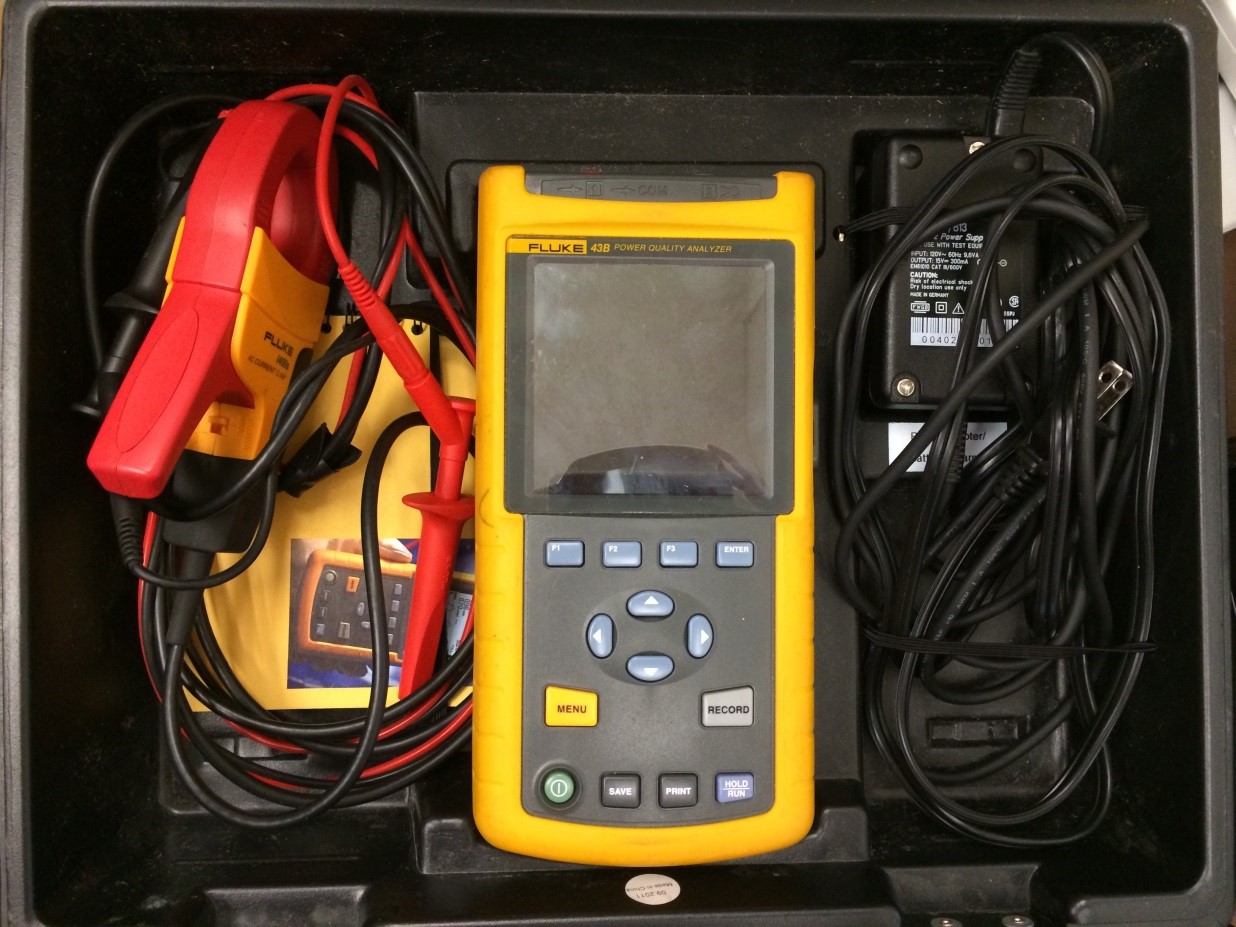Have facility personnel, usually one of the electricians on site, assist you in obtaining a live reading. Collect their name and title at the facility. Bring a power quality analyzer, note-taking materials, and a camera. If you have a phone camera, that can also be used to take photos.

Fluke 43B Power Quality Analyzer with i400s AC clamp
The OSU IAC uses the Fluke 43B Power Quality Analyzer to measure live power readings. The following instructions may not apply to other power quality analyzer devices, so please refer to your device's operating manual for further guidance.
Visual shorthand instructions for the Fluke 43B PQA can be through the following document:

Fluke 43B Power Quality Analyzer Inputs (Top)
Connecting the voltage leads backwards will lead to negative values. However, negative readings are only an issue when using the record function on the analyzer.
Readings obtained in single-phase mode when measuring three-phase will return inaccurate results.